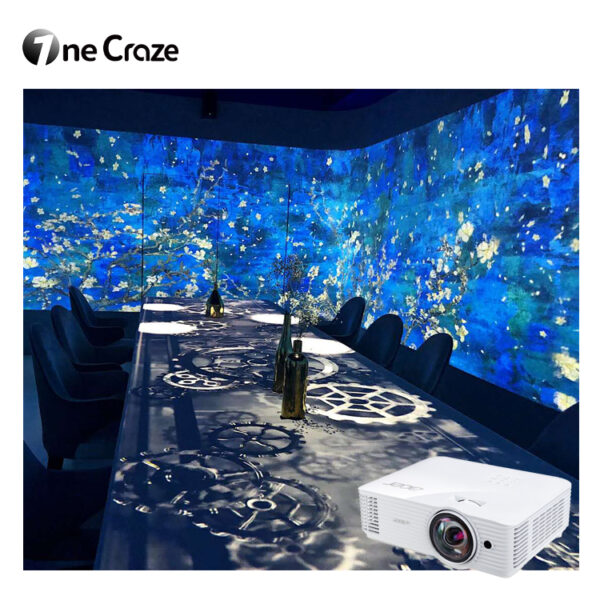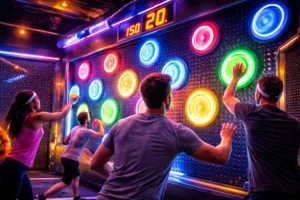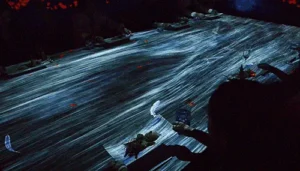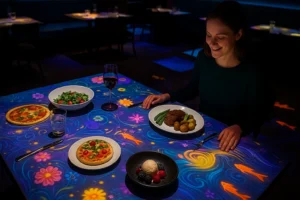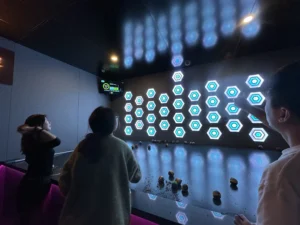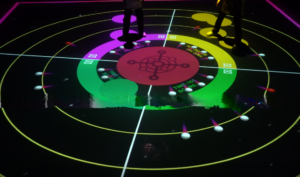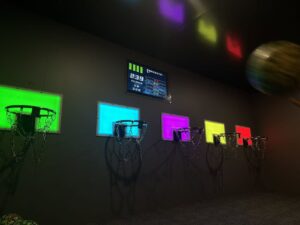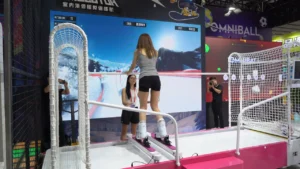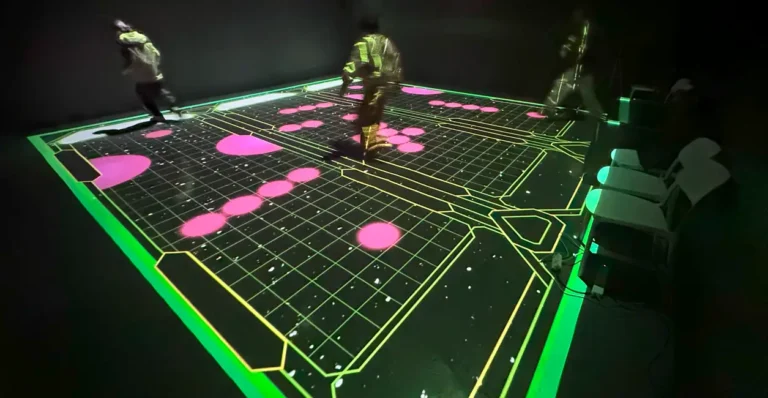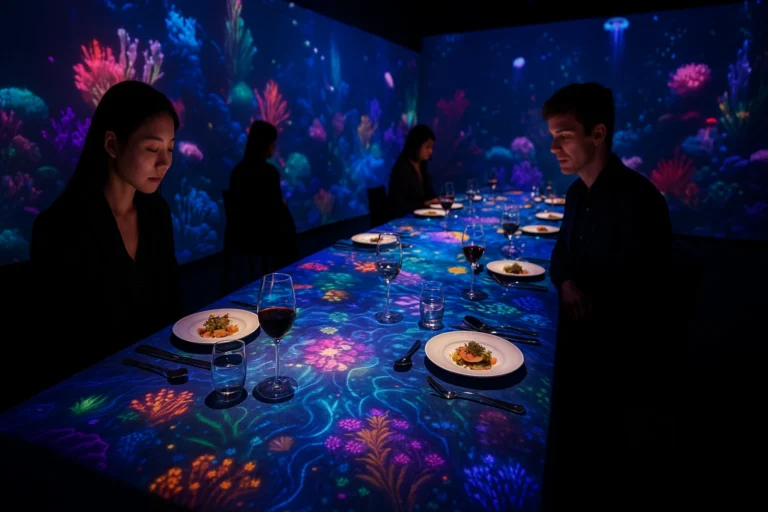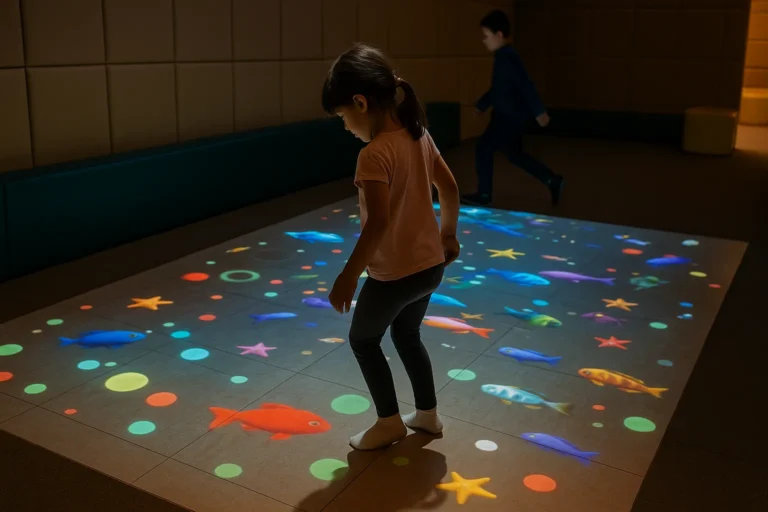In today’s highly competitive dining market, restaurants are seeking innovative ways to create unforgettable guest experiences. One of the most exciting and technologically advanced trends making waves is the fusion of interactive projector games with 3D mapping restaurant menus.
🎮 Understanding Interactive Projector Games & Floor and Wall Technology
Interactive projector games use motion sensors and projection software to allow guests to interact with floors and walls. This setup transforms static surfaces into responsive environments where users can play games, trigger animations, or even navigate content such as menus or stories.
How Does It Work?
- A projector casts visuals onto a flat surface (e.g., table, wall, or floor).
- Sensors detect user movements.
- Specialized software interprets gestures and triggers corresponding animations or gameplay elements.
🎯 Whether it’s kids jumping on animated characters on the floor or diners waving a hand to scroll through a 3D menu on the table, this tech blends fun with functionality.
🧠 What Is a 3D Mapping Restaurant Menu?
3D projection mapping adds a new layer of interactivity by turning objects—like plates or tables—into dynamic displays. In a restaurant setting, this technology is used to:
🍽️ Project a visually engaging, interactive menu on the dining table
🍹 Show animated renderings of dishes, ingredients, or chef stories
🎬 Display mini-games or animations while guests wait for their food
Combining this with projector games means the restaurant becomes a fully immersive digital playground. Guests don’t just order food—they interact with it.
🔧 Components of the System: What You’ll Need
To implement this hybrid entertainment-dining experience, restaurants need to invest in a complete system. Below are the core components:
| Component | Description |
|---|---|
| 📽️ Projector | High-resolution projector with brightness suitable for indoor lighting |
| 🧠 Motion Sensors | Detect body or hand movements for interactivity |
| 💻 Control Software | The best software to manage both games and 3D menu projections |
| 🛠️ Mount & Fixtures | Secure fixtures for ceiling or wall installation |
| 🔌 Power & Network | Stable power and optional Wi-Fi for updates and content customization |
🚀 Benefits for Restaurants
Integrating interactive projector games with a 3D menu doesn’t just entertain—it offers tangible ROI:
✅ Boosts customer retention: Kids and families love the gamified dining experience
✅ Increases average order value: Visually stimulating menus upsell items like drinks and desserts
✅ Enhances brand identity: Modern, tech-savvy vibes attract digital natives
✅ Shortens perceived wait time: Guests engage with content instead of clock-watching
In a time where every detail counts, creating the “hottest” dining experience can be a serious competitive edge.
⚠️ Challenges and How to Overcome Them
While the system is exciting, implementation does come with a few challenges:
⚙️ Hardware Maintenance: Projectors and sensors need regular calibration
🔌 Power Supply Management: Stable electricity and backups required
🧑🍳 Staff Training: Employees must know how to troubleshoot or update software
🌐 Content Licensing: Some games or animations require usage licenses
🎯 The best approach? Work with a reputable company or supplier who provides training, setup support, and regular software updates.
Yes. The system is designed for real-time responsiveness and often works passively in the background without interfering with food service.
Absolutely! Most suppliers and software providers allow for full customization, including colors, fonts, and dish animations.
You can order directly from specialized AV solution companies or through an interactive display technology store. Look for those offering full packages including hardware, software, and content design.


